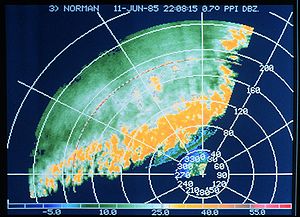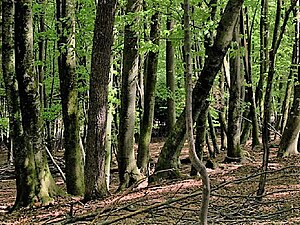A pallid sturgeon born in the muddy flows of the Missouri or Mississippi rivers and surviving more than a decade to reach reproductive maturity is among the rarest fishes in North America, an endangered species facing extinction.
Which is why a researcher who nonchalantly handles dozens of big fish daily got excited when he saw the flat snout and staggered barbels on a pale, three-foot-long fish thrashing in the Missouri River.
Boat operator Darby Niswonger quickly shifted the motor to idle and prepared to help land the prehistoric fish.
“I’ll get the net,” said Niswonger, a resource staff scientist for MDC’s Missouri River Field Station.
A few minutes later, both researchers carefully lowered the pallid sturgeon into a large plastic tub filled with river water.
“Because it’s so big, it’s probably pretty old,” Niswonger said. “There’s a good chance it’s a wild fish.”
Wild in this case means a pallid sturgeon hatched from eggs laid on a sand or gravel bed, one that floated helplessly with the currents as larval fish and then as a small fry found some slack water to grow and avoid predators such as catfish. Pallid reproduction became rare after the 1950s when completion of dams on the upper Missouri River and construction of a navigation channel from Sioux City, Iowa, to St. Louis, made the river less turbid and eliminated natural habitat.
Pallids evolved 150 million years ago when dinosaurs roamed the river shores and they remained a common fish into the 1900s.
Today though, they’re scarce, and a multi-state, multi-agency Missouri River Recovery Program funded and led by the U.S. Army Corps of Engineers aims to help pallid sturgeons and other fish and wildlife species affected by river modifications. As part of that program, MDC fisheries crews this month are catching wild pallids from the river as brood fish for spawning at the Blind Pony Hatchery near Sweet Springs, Mo. If they’re lucky, they’ll catch at least one or maybe a few each day. Those fish carry genetic diversity that’s needed if hatchery-raised pallids are to help the species survive in their native rivers.
Pallid sturgeons are elongated fish with cartilage rather than bones, including a flat, pointed snout and tough plates resembling scales on their backs and sides. They feed along the river bottom and use a tube-like mouth to suck up fish, insects and vegetation. The similar but smaller shovelnose sturgeons, which rarely top five pounds, remain numerous. But the larger pallid sturgeons are endangered nationwide.
Pallids can live 50 years or more and weigh more than 60 pounds. But biologists in recent decades have found only older fish and few young. Now they worry that with low numbers of pallids remaining, the chances of males and females finding one another during the spring spawning season are remote, Niswonger said. Plus, pallid males and females don’t reach reproductive maturity until 7 to 13 years, and both only reproduce every couple of years.
So stocking hatchery-raised fish is one hope for helping pallids rebound.
MDC fisheries crews use trotlines baited with nightcrawlers to catch potential brood fish. Niswonger and Huffmon on Tuesday ran and then reset lines in the river near Missouri City, downstream of Kansas City. They caught several shovelnose sturgeon, catfish and drum. All were weighed and measured to be part of an overall fisheries data base for the river.
But they only caught the one pallid sturgeon and it received special attention.
The biologists weighed and measured the fish at 6.6 pounds and 38 inches. Then they measured and counted the rays in the fins. They measured the distance between barbels, the whisker-like appendages near the mouth.
Niswonger ran an electronic scanner over the pallid to see it if had an implanted microchip, which would indicate that it is a hatchery-reared fish. She found none. So a microchip was inserted into the fish, which enables its reference number to be read with a scanner if the fish is caught again in coming years. That enables researchers to track a fish’s growth and movement in the river. Fish taken to the hatchery are later returned to the river.
But the biologist also clipped a portion of fin for DNA testing at a laboratory. Even if the fish is a male or female ready to spawn, it will not be utilized until a DNA test ensures that it is different from the hatchery-reared pallids released since into the river. More than a million young pallids have been released into the Missouri and Mississippi rivers, with three stockings in the 1990s and annual stockings since 2001.
“We’re stocking a lot of brothers and sisters,” Niswonger said. “They get a head start without having to make it as fry in the wild.”
The crew also recorded the location where the river-born pallid was caught using satellite technology, and they lowered instruments into the water to measure temperature and flow velocity.
Just raising pallids in a hatchery and releasing them won’t make the population sustainable. Biologists want to know what underwater habitats the fish prefer during spawning. Research crews from MDC and other agencies also study the fish in other seasons, such as following some with radio telemetry, so habitat can be modified along the river to help them. The fate of pallids is tied to solving mysteries beneath a churning river’s surface.
“We still don’t know for sure what the bottleneck is,” Niswonger said, “what’s keeping them from growing and maturing and spawning on their own.”
-Bill Graham-
 Image via WikipediaJEFFERSON CITY, MO., APRIL 21, 2011 -- Take the opportunity May 14 to "Get Out and Play!" at Washington State Park near De Soto. Sponsored by Missouri State Parks, this free event is open to visitors of all ages, and will include family-friendly games, activities and crafts.
Image via WikipediaJEFFERSON CITY, MO., APRIL 21, 2011 -- Take the opportunity May 14 to "Get Out and Play!" at Washington State Park near De Soto. Sponsored by Missouri State Parks, this free event is open to visitors of all ages, and will include family-friendly games, activities and crafts.














